
5 minute read
Th e Witness of Solemn Profession by Blake Billings ’77, Ph.D
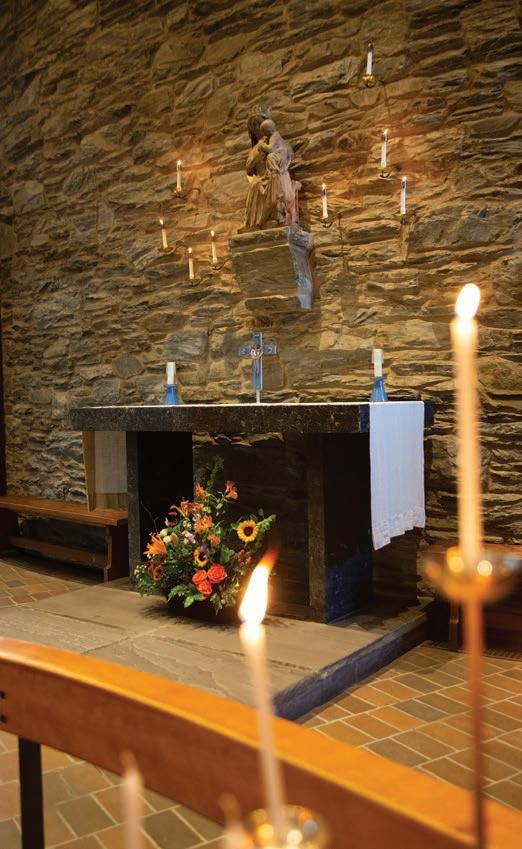
Illuminating Our Lady
e Witness of Solemn Profession
Blake Billings ’77, Ph.D.
Our liturgical experience was enhanced recently with the liturgy of Solemn Profession for Brother Benedict Maria Sagaya. We explore some of the distinctive elements of this liturgical celebration.
… If aft er due refl ection he promises to observe everything and to obey every command given him, let him then be received into the community. But he must be well aware that, as the law of the rule establishes, from this day he is no longer free to leave the monastery, nor to shake from his neck the yoke of the rule which, in the course of so prolonged a period of refl ection, he was free either to reject or to accept.” (Rule of Saint Benedict, chapter 58)
Our liturgical experience was enhanced recently with the liturgy of Solemn Profession for Brother Benedict Maria Sagaya. Th is liturgy carries fundamental signifi cance for the monastic community, adding to it a new member and providing a profound expression of faith, a witness to the monastic and extended communities of Portsmouth Abbey. We will explore in this article some of the elements that compromise this distinctive liturgy, highlighting some of their theological signifi cance.
Sacred Space
We should not overlook the sacred space in which liturgy occurs, the “fi rst impression” for those joining the liturgical celebration. We are blessed with the beauty of our oratory, the Abbey’s Church of St. Gregory the Great. Its appearance was enhanced by the illumination of the array of candles surrounding the statue of Our Lady in the sanctuary. Th is has been the practice for the Solemnity of All Saints, emblematic of Our Lady, full of the grace of sanctity, as well patroness as Queen of Peace of the community to which Brother Benedict Maria was soon to commit himself. Preparation for his profession was visibly indicated in the sanctuary, before the altar, where a space had been opened, chairs for visiting brethren were set up, and a carpet laid marking the space where he was to lie prostrate, as those gathered lift ed him in a litany eliciting the prayers of Our Lady and of all saints.
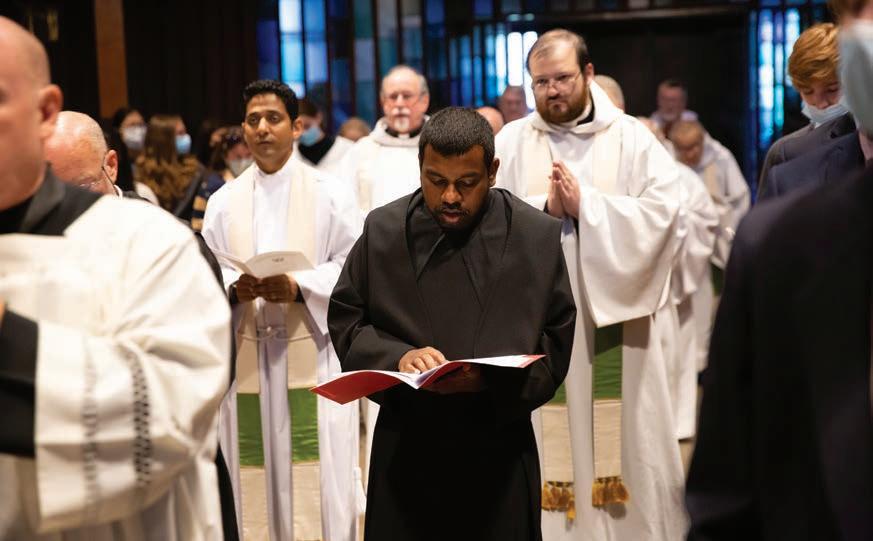
The Procession
The Procession
The importance of the procession in liturgy is often overlooked, yet it remains the deeply symbolic first action of the liturgy. The processional leads us into the heart of preparation for prayer, and expresses the theme of living, of “walking in faith.” It reminds us that the journey of our lives is a journey of faith, a pilgrimage, heading to a destination that is holy. The Portsmouth monastic community used to also process in and out of the Divine Office, as one can see in the archive photo on display this month in the winter garden, where monks stand in “Statio,” preparing inwardly for the procession into Vespers. The procession into Mass is typically accompanied by a hymn.
The Liturgy of the Word
This liturgy of Solemn Profession was woven into Mass. It is situated within the Liturgy of Word, the portion of the eucharistic liturgy dedicated to preaching, teaching, witness, and creed. The proclamation of the Gospel for this liturgy leads to the homily, and from there to the rites of profession, culminating in the Profession Rite – a seamless web of witness. While Prior (now Abbot) Michael’s homily maintained a focus on Brother Benedict and his preparedness for professing his commitment to his community, its message was tailored to all the community. It gave articulation to the witness of his profession of vows, the same vows already taken by members of the monastic community he joins. Brother Benedict remained seated in the sanctuary during the Liturgy of the Word, witness to his brethren and to the entire congregation gathered.
The Liturgy of the Word
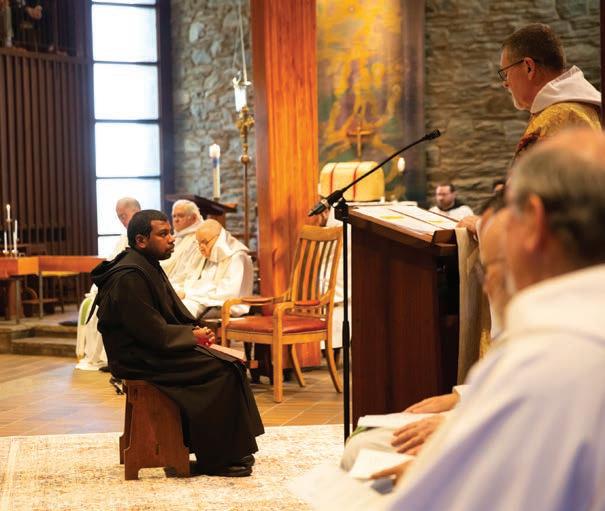
Profession of Vows and the Reading of the Document of Profession
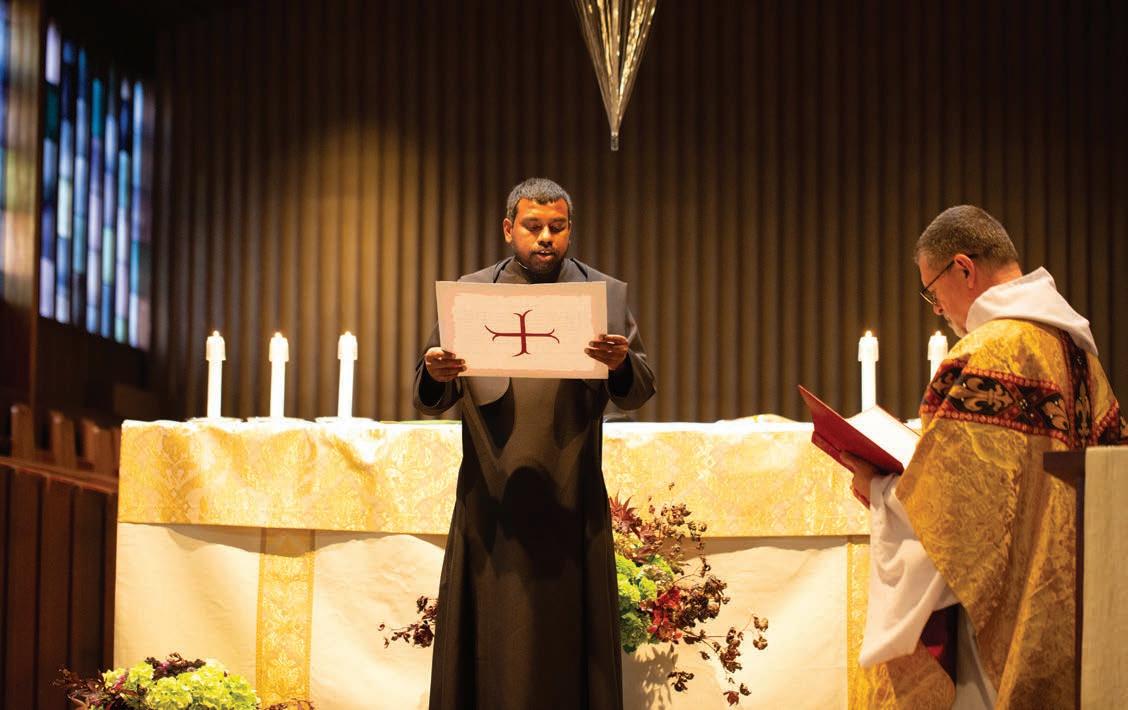
Extending from the homily is the examination by the superior, which expresses clearly the step the monk is about to freely take. The new brother then professes his vows, promising, “in the presence of God and all his saints: Stability, Conversatio Morum, and Obedience.” Following this crucial moment is a distinctive element in the liturgy in which the new brother reads aloud his document of profession. Carrying profound spiritual import, the document also carries the weight within canon law. The statement is read aloud, signed, and left in the privileged resting place of the altar itself for the duration of the Mass. The Profession Rite thus transpires before the altar, leading in the eucharistic celebration into the Offertory, in which the congregation echoes this complete offering made by the newly professed.
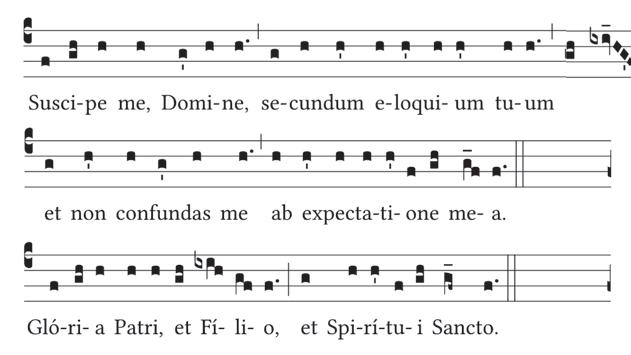

“Suscipe” and Litany
Being sustained in the consecrated life demands and requires much prayer. The newly professed pleads with God, in a psalm verse emblematic of the need for God, expressing the desire for acceptance into the community.
Uphold me, Lord, according to your promise, and I shall live, and do not bring to nothing all my hope.
The “Suscipe” verse is emblematic of forgiveness itself. It is sung as a three-fold, ascending plea, mirroring the threefold unveiling of the cross on Good Friday, the three-fold heralding of the Paschal Candle, and the three-fold exclamation of “Alleluia” at the completion of the Easter Vigil. “Uphold me, Lord… do not bring to nothing all my hope.” And as the Liturgy of God’s Word is extended and given a deeper meaning in the context of the profession, the petitions are then similarly transformed into a litany of prayer for the newly professed. With the pall covering the newly professed entirely, symbolic of death and new life, the community is gathered into the prayer of the universal church. The extended litany, including patrons associated with the monastery and its members, added a powerful significance on the Solemnity of All Saints.
Brother Benedict beneath Pall for the Litany
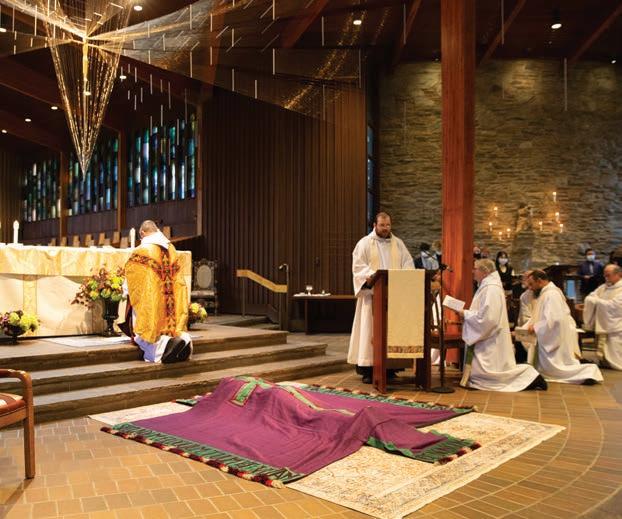
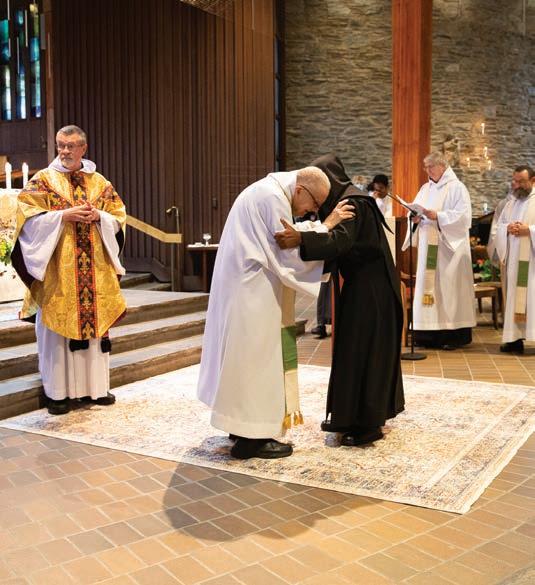
Abbot Matthew Stark welcomes Brother Benedict
Welcome into the Community
With the completion of the litany and the removal of the pall, the superior announces that the admission of the professed is complete. The monastic community welcomes him one by one, each extending a personal sign of peace.
It is also a witness of peace for the entire congregation, accompanied by the singing of the verse, “Ecce quam bonum” (“How good and pleasant it is when brothers live together in unity.”) The new member of the chapter is then shown to his place in the choir, as the community and congregation proceed to the altar for the celebration of the Liturgy of the Eucharist.










